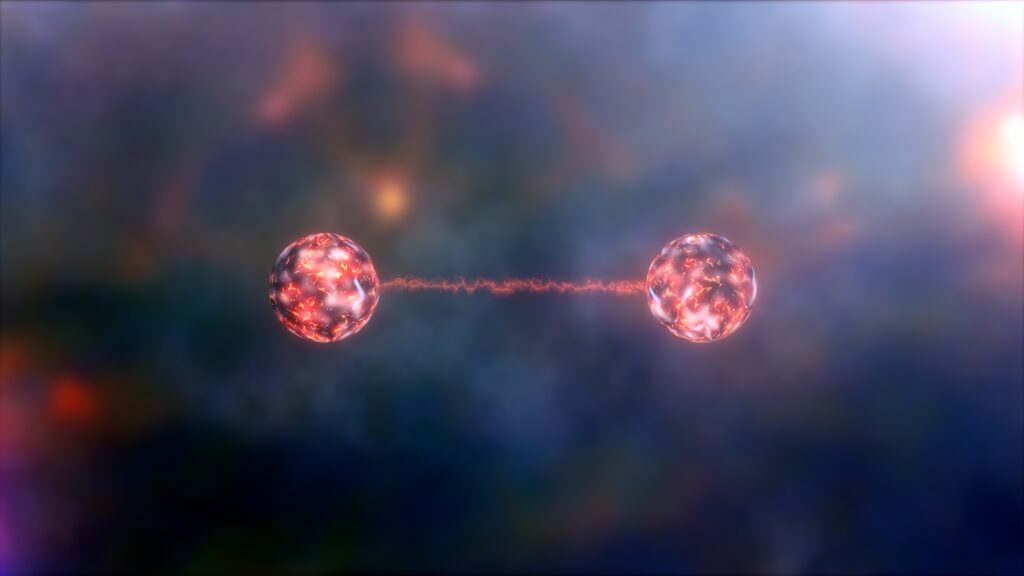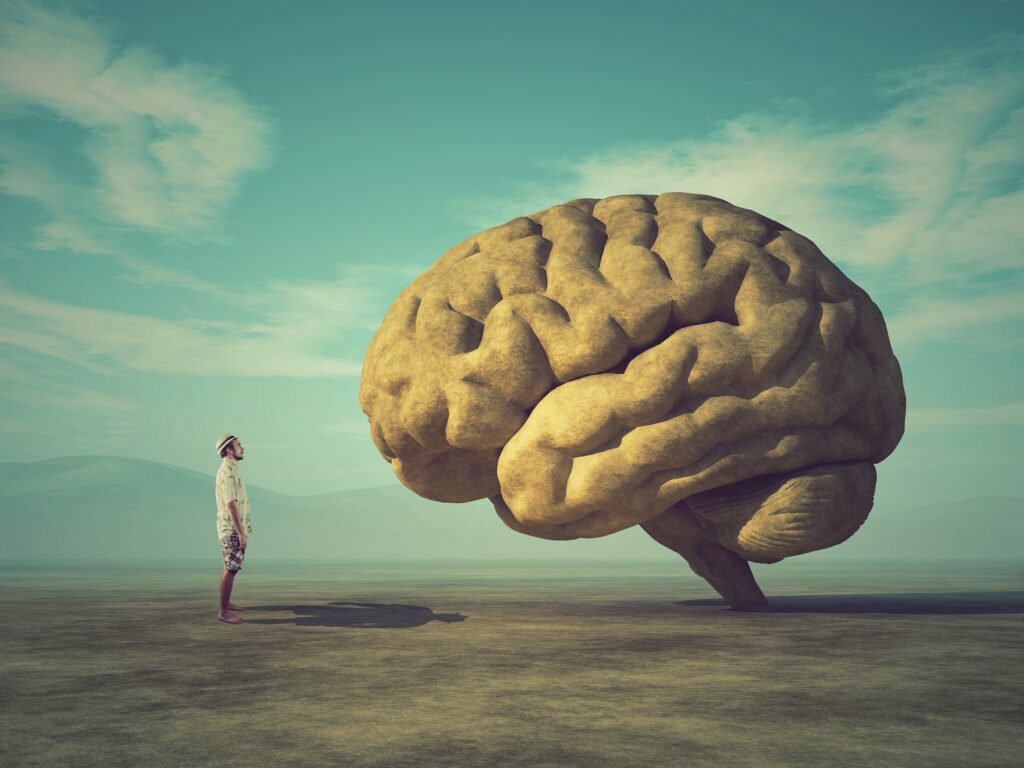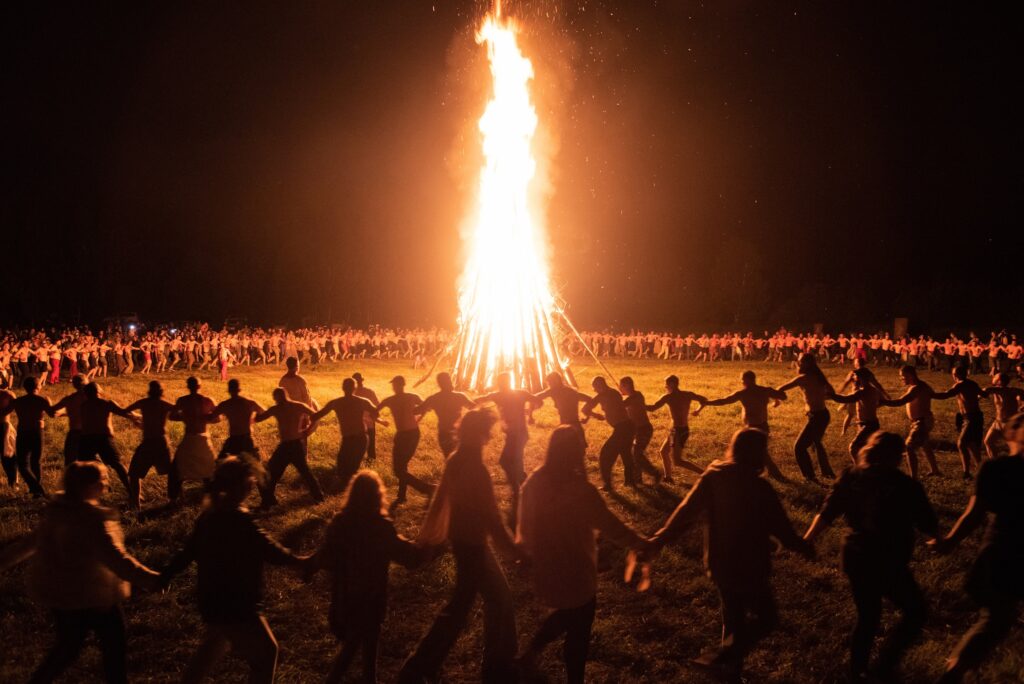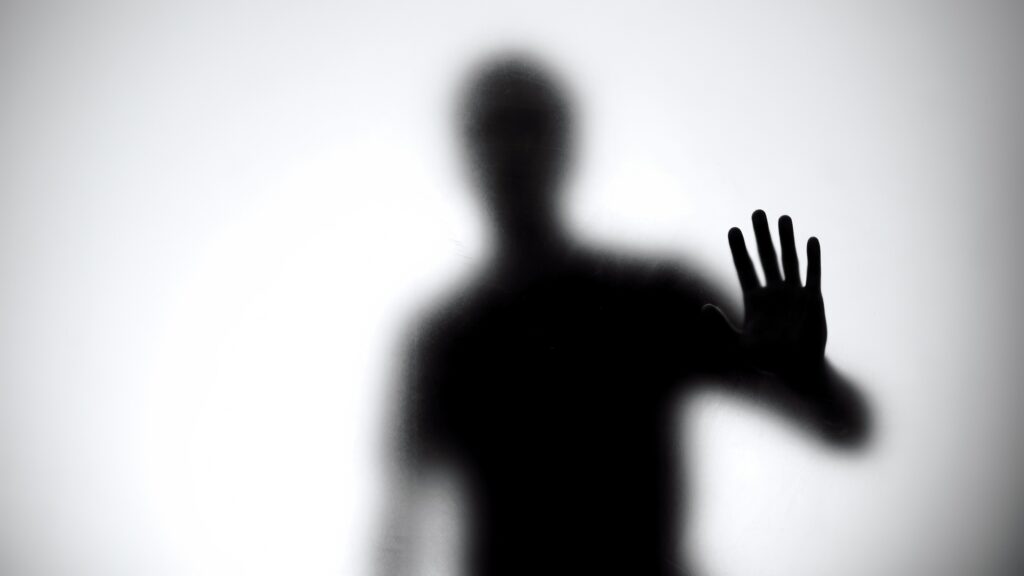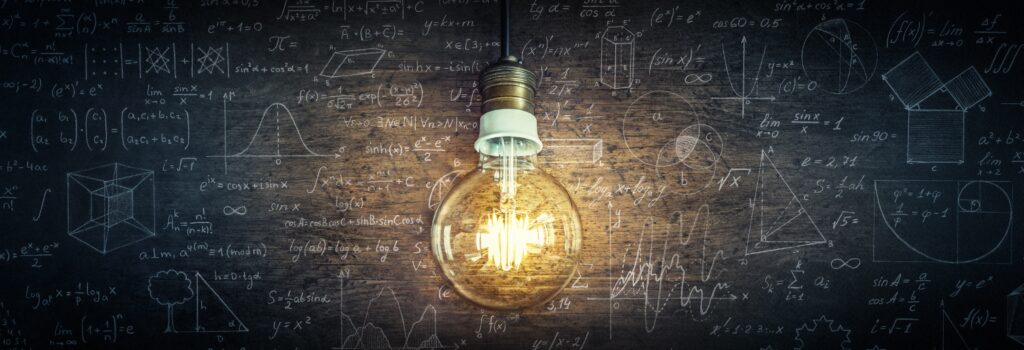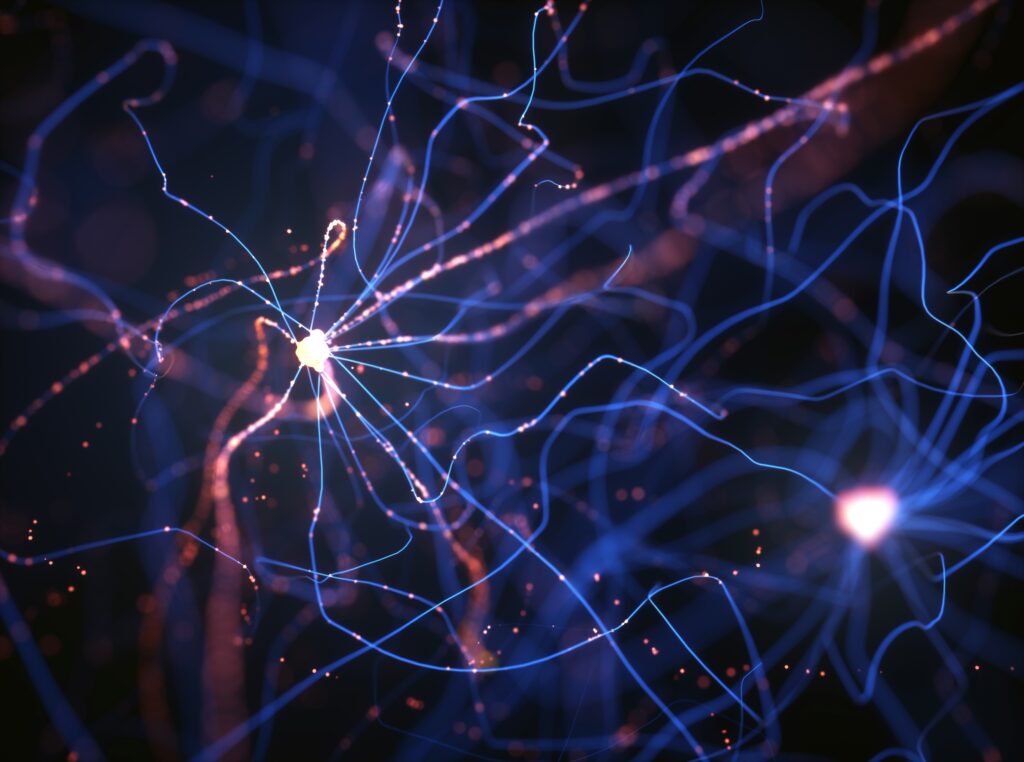Communicating through the “Collective Unconscious”
Reading | Psychology
![]() Prof. Victor F. Petrenko, PhD, PhD | 2021-06-09
Prof. Victor F. Petrenko, PhD, PhD | 2021-06-09

Prof. Petrenko is back, and this time he shows that we may be regularly, though implicitly, using the so-called “collective unconscious”—a transpersonal field of subjectivity we all share, but which we can’t explicitly access through introspection—to tap into each other’s minds, minds in the animal kingdom as a whole, and perhaps even beyond.
Philosophers, linguists, and psychologists have all pointed out that the process of cognition requires some form of a language—a sign-system. Furthermore, according to L.S. Vygotsky, a sign-system is used as a tool to control one’s behavior and thoughts. Rational thinking is characterized by notions that provide clarity of awareness and produce writing, down to scientific concepts. But for the aspects of reality that we are less cognizant of, we use symbolic and poetic representations, dream images that create mythologemes, religious parables and prophecies. So it’s not surprising that Carl G. Jung was interested in the figurative and mythological realm and in the study of dreams. In the context of the problem of the unconscious, let us consider one of Jung’s most vivid dreams:
I was in a house I did not know, which had two stories. It was “my house.” I found myself in the upper story, where there was a kind of salon furnished with fine old pieces in Rococo style. On the walls hung a number of precious old paintings. I wondered that this should be my house, and thought, “Not bad.” But then it occurred to me that I did not know what the lower floor looked like. Descending the stairs, I reached the ground floor. There everything was much older, and I realized that this part of the house must date from about the fifteenth or sixteenth century. The furnishings were medieval; the floors were of red brick. Everywhere it was rather dark. I went from one room to another, thinking, “Now I really must explore the whole house.” I came upon a heavy door and opened it. Beyond it, I discovered a stone stairway that led down into the cellar. Descending again, I found myself in a beautifully vaulted room which looked exceedingly ancient. Examining the walls, I discovered layers of brick among the ordinary stone blocks, and chips of brick in the mortar. As soon as I saw this, I knew that the walls dated from Roman times. My interest by now was intense. I looked more closely at the floor. It was of stone slabs, and in one of these I discovered a ring. When I pulled it, the stone slab lifted, and again I saw a stairway of narrow stone steps leading down into the depths. These, too, I descended, and entered a low cave cut into the rock. Thick dust lay on the floor, and in the dust were scattered bones and broken pottery, like remains of a primitive culture. I discovered two human skulls, obviously very old and half disintegrated. Then I awoke [15].
An astonishing dream! Not even a dream, but downright the metaphorical summary of Jung’s concept of the unconscious. Usually, dreams are quite chaotic and poorly structured, but this one is a short, literary masterpiece. Perhaps geniuses, and Jung is undoubtedly one of them, tap into more structured aspects of the collective unconscious and, consequently, experience clearer and more logical dreams. Is that possibly the key to being a genius?
Jung’s dream illustrates one important point: at its depths, the unconscious has a cultural-European content. There is ancient Rococo furniture; then if we go deeper—the vaulted ceilings of a Roman house; and even deeper—there are layers of primitive culture with fragments of ancient pottery and two skulls. Sigmund Freud interpreted the presence of skulls as evidence of Jung’s unconscious death instinct, but Jung disagreed with it.
I would permit myself a different interpretation by suggesting that these are the mythological skulls of Adam and Eve, as we can observe this plot in the Church of the Holy Sepulcher in Jerusalem. There, according to the legend, Adam, the progenitor of the human race, was buried. Directly under Golgotha is the chapel of Adam, where you can see a crevice formed during an earthquake. Through this crevice, the blood of Jesus seeped with the rainwater and washed Adam’s skull.
I brought up this story to emphasize that the content of the collective unconscious tapped into by Jung’s mind is by no means universal for the entire human race. And the streams of the collective unconscious that the Hindus or Chinese, Persians or South American Indians tap into is filled with different archetypal images. If we move deeper into the evolutionary tree, we will even find layers of experience of our animal ancestors [38].
For example, Henry Bergson, in his brilliant book “Creative Evolution,” raised the issue of reception and transmission of holistic states at the level of the unconscious. He points to how a wasp paralyzes a caterpillar by a precise sting [5]. Bergson suggested that the wasp unmistakably finds the caterpillar’s ganglion not as a result of learning, which behaviorists later described as the development of a skill by ‘trial and error,’ but by directly sensing it, as if the caterpillar’s ganglion were inside the wasp. That is, by means of the wasp’s own psyche. Henri Bergson called this mechanism of cognition “creative intuition” and believed that it is inherent in all living beings because they share common ancestors. In modern psychology, intuition has a slightly different meaning related to transcending the boundaries of stereotypical thinking [60, 2]. Meanwhile, Bergson’s interpretation of intuition has remained practically undeveloped.
A Russian philosopher of the Silver Age, N.O. Lossky, explained the possibility of intuitive empathy by the coordination of “substantive subjects”—a kind of resonance of the souls of living beings. When it comes to human interaction, emotional closeness is the empathic tuning fork for mutual understanding.
So, psychologist A.G. Suleimanian examined the forms of telepathic communication between members of a primitive tribe based on the ethnographic research of the South African writer L.G. Green [69]. According to Green, the ‘smoke language’ of the African Bushmen and Australian aborigines, by means of which rather detailed messages are transmitted, is not a language in the proper sense of the word, since the amount of information transmitted is too high for such a primitive signaling system. Bonfires are only a trigger that urges the natives to tune in to receive a message. “I make a fire to let others know that I have already begun to think,” one Australian aborigine explained to the writer, “and they, too, begin to think until our thoughts coincide.” [69, 68]. Analyzing Green’s findings, Suleimanian compared them with those in the psychological literature on telepathy. He linked them to the natives’ ability for extreme concentration, also inherent in animals, and to the very close and intimate relationships between tribesmen. He also found that similar telepathic phenomena could apply to the so-called ‘civilized people’ in extraordinary circumstances. There is ample evidence that mothers experience seemingly unreasonable anxiety about children hundreds of kilometers away, and who, indeed, turn out to be in trouble at that time.
Humanistic psychology, and more specifically, group psychotherapy in the spirit of that of C.R. Rogers, developed methods of controlled empathy. As a result, a so-called altered state of consciousness is achieved: a peculiar nervous agitation, which at a certain moment simultaneously engulfs all the participants and is felt as a single field of tension. The participants reported a deep spiritual experience, a sense of the unified spirit of the group. They breathed together, felt together, even finished each other’s sentences, and felt the power of the ‘life force,’ whatever that might be, infusing everyone. The usual separation between ‘me’ and ‘you’ was erased. It was like a meditative experience in which everyone felt like the center of consciousness. And along with this extraordinary sense of unity, the real separateness of each person was so clearly preserved.
Unlike existentialist philosophy and humanistic psychology, which emphasize the value and unique essence of each individual, the Eastern Buddhist tradition cultivates the idea of moving away from the unique ‘self’ towards integration. This is similar to the ‘sobornost’ in Russian Christian Orthodox tradition, i.e., natural spiritual community. In Zen Buddhism, the actualization of the previous historical experience in human consciousness is connected to the idea of the illusory existence of an individual. It is described by the doctrine of ‘anattā,’ and by the idea of the unity of all living beings as incarnations of one Spirit.
The idea of the ‘creatable’ spatial-temporal world, which alone makes history possible, and contrasting it with the supra-spatial and supra-temporal ‘I’—the “substantive subject” in Lossky’s terms—is also inherent in Russian religious and near-religious philosophy of being.
“Since the ‘subject’ is supra-temporal and supra-spatial,” Lossky wrote, proceeding from the idea of the immortality of the soul,
its coordination with objects is not due to spatial proximity and coexistence in time; it is the connection of the ‘subject’ with the world, which stands above any spatial and temporal fragmentation. Therefore, knowledge about things that are far from my present life in time is possible. On that basis, an intuitive theory of memory can be developed, according to which, recollection—is an intentional act directed by the ‘subject’ through the abyss of time directly to an event experienced or perceived yesterday or even 20-30 years ago; at the same time, the act of recollection is the present event, and what is remembered—the past in the original once again present in mind. [21]
In any case, regardless of possible interpretations, the idea of a historical memory of all events and all deeds of humanity as a whole, as well as separate individuals, deserves attention. At least from the point of view of psychotherapy, it would provide an infinite memory of our entire existence, if not personal immortality. The following insights could serve as arguments in favor of this idea. According to A.R. Luria, individual memory contains almost all the events that happened during a lifetime. J.M.R. Delgado’s brain electro-stimulation experiments allowed him to assert that “neurons retain a complete record of past events, including all sensory information: visual, auditory, proprioceptive, etc., as well as the emotional tone of events.” [9] Equally congruent are the results of B.M. Velichkovsky’s experiments to determine the capacity of the long-term visual memory, and hypnotic experiments on extracting past events from the passive memory. The memory of the Universal Consciousness or the Universe, which has been evolving for billions of years, could very well contain mechanisms to capture and store all the information about everything that has happened. To recall M.A. Bulgakov’s practically religious prophecy from his novel “The Master and Margarita”: “Manuscripts don’t burn.”
Of course, according to Occam’s principle of parsimony that “entities should not be multiplied without necessity,” in science such an assumption ought to be eliminated. Yet the natural-scientific paradigm of linear time does not accommodate ‘lucid dreams,’ premonitions and prophecies, sensations of the presence of other personalities within oneself, i.e., being demon-possessed, or the paradoxical feeling of sensing the unexpressed suffering of others.
The existence of high-quality historical novels, which describe with amazing authenticity the mindset of people from the distant past, is a case in point. We do not yet know through what means of creative empathy writers such as A.S. Pushkin, T. Mann, L. Feuchtwanger or L.N. Tolstoy tap into these historical mental egregores. Presumably, in our subconscious there are not only Jungian collective archetypes, experimentally unproven but widely used in theoretical constructs, but also other forms of evolutionary memory and historical experience. A key to accessing the ‘genetic’ memory of humanity [29, 70, 14, 19, 10, 16, 67] may lie in various forms of altered states of consciousness and, in particular, meditation [7, 1]. By directing our awareness within, by realizing the call of the ancient philosophers: “Know thyself,” and by performing a kind of ‘mental archeology,’ we can find a different path to knowing history.
Such intuition is also present during hypnosis sessions, such as the treatment of one particular patient with anorexia nervosa and bulimia [42, 43]. The patient went to a ballet school in her youth, and while remaining graceful and slim, she nonetheless complained about her body. As it turned out during the hypnotherapy, she experienced a psychological trauma when her ballet partner caught her eating cakes, which were strictly forbidden. Since he needed to lift her up during the dance, he called her ‘a fat cow’ and slapped her. As a result of this incident, the young girl experienced severe stress, which manifested itself, in particular, in her inability to get pleasure and satiation from food. So, to eliminate the consequences of bulimia, being the result of an explicit social prohibition of satiety, V.A. Kucherenko hypnotically placed the patient in social situations different from ordinary life, in which social prohibitions against enjoying food would not apply. He immersed her in a Roman festive dining, then in a Russian lordly feast. But every time, there were circumstances that prevented the patient from enjoying her food.
It is typical for a neurotic to imagine a situation in dreams or in a hypnotic vision in such a way that the situation leads to the usual failure. For example, during imaginary skiing, he or she will certainly crash into a tree; while imagining being a mighty animal, he or she is bound to see it with a sore paw or bald patches on the skin.
Our patient was placed in a situation of hunting among a primitive tribe that had slaughtered a mammoth, but she again suffered a setback. A piece of steaming, juicy ‘mammoth meat,’ roasted on the fire, was suddenly and rudely taken away from her by a hulk of a man in animal skin. Our patient could only whimper pitifully of an undeserved grievance.
It was only when Kucherenko ‘placed’ her in the body of a prehistoric animal, the Pterodactylus, that the patient was able to experience the joy of satiation. She felt the exhilaration of free flight, and a feeling of a predator controlling its territory. Gliding on webbed wings down on some giant frog, she tore it open and, for the first time, satiated herself with its flesh. So, being in the body of the animal, deprived of human norms and prohibitions, the social inhibitor was finally removed, and the patient enjoyed the pleasure of eating food. Since then, she began to make a good recovery. But what interests us in this case is not the psychotherapy, but another aspect of the study: where does the knowledge of the flight experience of a fossil animal come from in the psyche of a modern person?
It seems that a human being remembers not only the personal unconscious, and not only the collective unconscious of their own race and species, but even the unconscious of the previous evolutionary stages. A Russian scientist B.M. Velichkovsky, a well-known expert in the field of cognitive psychology, writes:
At the early stages of evolutionary development one or another type of awareness prevailed. The most primitive form was considered ambient (spatial) awareness, which, as we know from paleoneurology, first appeared in the most ancient reptiles, the dinosaurs, and is associated with the localization of objects in space <…> The conclusion is that the human body has the capacity of perception, built in as early as at the dawn of evolution. [71]
Equally shocking is the discovery of knowledge during the hypnotherapy that seemed to have been acquired from some sources other than the individual learning it. In Kucherenko’s alcoholism treatment program, patients were induced not only to fear the use of alcohol but were also given many positive experiences to boost a person’s self-esteem [46]. Patients ‘flew into space,’ ‘bathed in the waves of the ether,’ etc., and one of them reported being surprised by seeing sharp, dotty and very bright stars when he ‘was flying’ in the starry sky. Indeed, in the absence of Earth’s atmosphere, and consequently air diffraction, stars are not as blurred as they look from the ground. It is unlikely that our patients could have known what they look like from space, although they may have heard about it in some popular science program. But if this factor is ruled out, such cases suggest the possibility of acquiring information which is not in any way related to direct life experiences. Perhaps there is a single mechanism for retrieving knowledge from the collective unconscious?
But let’s return to the Buddhist teaching lineages, whereby personal ‘transmissions’ from a teacher is key. In Russian psychology a similar phenomenon of the influence of the teacher’s personality on the student’s success was studied by V.A. Petrovsky [57, 58].
Students had to take exams under varied conditions assessing their performance. In one case, a portrait of a teacher ‘popular’ with the students was placed on the wall. In the other, a portrait of a ‘disliked’ teacher was hanging instead. Both samples of students were of equal proficiency level. So, the students with the portrait of their ‘favorite teacher,’ discreetly visible on the wall, were much more successful than the students with the ‘unloved teacher’ in the same classroom. Petrovsky called the influence of an important role-model on the success of creative work the phenomenon of ‘subject reflection’.
Following this logic, portraits of people important to us or icons of revered saints should have a positive effect on our emotional and spiritual well-being, and not only in the field of education. These images and even literary characters, which we have come into contact with at least once in our lives, remain forever in the personal or even in the collective unconscious, and the only problem is to extract this information [61, 24].
The individual and collective unconscious have another shocking characteristic: they have no spatial and temporal coordinates, unlike consciousness, which is object-determined. Let us be reminded that I. Kant considered the categories of space and time not as fundamental ontological dimensions of being but as intuitions of consciousness. In classical philosophy the intentionality of consciousness, i.e., its orientation towards the object-based world, is regarded as the most important property of consciousness. And the very process of categorizing object-based reality implies spatial and temporal references, while for the unconscious there is neither time nor space.
The joint work of C.G. Jung the psychologist and W.E. Pauli the physicist mentioned the idea of the commonality of the quantum world and the collective unconscious, as well as the assumption that the phenomenon of synchronicity, described by Jung, has an analogy in quantum physics [15, 20].
A number of our publications describe the EPR phenomenon in quantum physics, named after the scientists who formulated it—Einstein, Podolsky and Rosen [51, 52, 53, 54]. It was referred to in discussions of Albert Einstein and Niels Bohr as something ‘that cannot be,’ but later was confirmed by research. It is as follows: the object is described as a superposition of possible states prior to the subject’s perception of it, and awareness of the measurement result. According to Heisenberg, observable properties of elementary particles do not exist before their measurement, which brings them into existence [13]. Disintegration of an object leads to formation of at least two objects with ‘entangled’ (interconnected) states, because conservation laws act in such a way that a certain cumulative constant is preserved. Furthermore, superluminal speeds of ‘influence transfer’ lead to violation of the causality principle and open possibilities of instantaneous teleportation of states. Experiments of A. Aspect [3] and J. Bell [4] empirically confirmed this phenomenon of ‘non-locality’ of being in the quantum world.
For example, R. Penrose writes:
As long as quantum entanglement does not break, we, strictly speaking, cannot consider any object in the Universe to be separate and independent. <…> No one can truly explain, without going beyond the standard theory, why it is not at all necessary for us to represent the Universe as a single whole, this incredibly complex tangle that has nothing to do with the classical-looking world that we actually observe. [34]
This particular version of the Unity of Being suggests that the phenomena of synchronicity, foresight and telepathy are grounded in the physics of the quantum world. Also, the outstanding Russian psychophysiologist E.N. Sokolov [65] shared the idea of S. Hameroff and R. Penrose [12] regarding the existence of neural microtubules at the molecular level in the human brain, which enables the brain to work as a kind of quantum computer.
The idea of non-locality of existence and the phenomenon of quantum entanglement leads to another fundamental hypothesis. Namely, the search for fellow extraterrestrial intelligence, as well as the analysis of possible signals from space, is an extrapolation of our current state of technology to the hypothetical capabilities of other intelligent civilizations. These civilizations could possibly even be ahead of us in cosmic evolution. And making contact, if it has not already taken place at a level accessible to the human psyche, may be accomplished through deep meditation or the practice of other altered states of consciousness. After all, principles of non-locality of existence and phenomena like EPR, which make evident the absence of space and time categories in quantum physics, and psychological phenomena such as synchronicity, if not reduced to determinism, suggest some other forms of connectivity. They open a hypothetical, yet possible form of ‘information transmission’. And this transmission would not be in the form of text or even an explicit ‘transmission’ itself, but through synchronous, instantaneous resonance of states, like the psychic states of living beings.
Summarizing the above, several initial conclusions can be made. A promising direction in psychology is to explore the personal and the collective unconscious, which can be approached through the creation of holistic interdisciplinary theoretical models that include, as a consequence, the realization of unique case studies of individuals. Human consciousness is space-time bound and framed by a system of meanings, not only verbal, but also perceptual standards. The collective unconscious, on the other hand, has a different nature—being outside of time and space. There is a direct analogy between the methodology of quantum physics—such phenomena as EPR, non-locality of existence and its systemic connectivity—and the methodology of the unconscious, including the phenomena of synchronicity, telepathy and foresight. Humanity, and hence psychology as a science of the human psyche, is on the threshold of global polyfurcation (see ‘2045 Initiative’), including reaching R. Kurzweil’s singularity’ or ‘Snooks-Panov vertical’ [33]. Such processes are related to the transition from purely earthly evolution to the cosmic one and entail contact with extraterrestrial intelligence.
*Part of the lecture given during the ‘Winter Psychology School’ in St. Petersburg in 2020.
REFERENCE LIST
- Andresen, J. Meditation Meets Behavioral Medicine: The Story of Experimental Research on Meditation. In Robert, K.C. (ed.), Cognitive Models and Spiritual Maps (pp. 43–55). N.Y.: Bowling Green. 2000.
- Asmolov A.G. At the Threshold of Non-Classical Relativistic Psychology // Siberian Psychological Journal. 1997. №7. pp. 24–39.
- Aspect A. Bell’s Theorem: The naive view of an experimentalist // Springer. 2002.
- Bell J.S. On the Einstein Podolsky Rosen Paradox // Phys. Phys. Fiz. / P. W. Anderson, B. T. Matthias, Pergamon Press, 1964. Vol. 1, Iss. 3. pp. 195—200.
- Bergson H. Creative Evolution. Translated from French by V.A. Flerova. M.: CANON-press: Kuchkovo Pole, 1998.
- Cole M. Introduction // Journal of Russian and East-European Psychology. 1993. Vol. 31. № 2.
- Conze E. Buddhist meditation: pious exercises, mindfulness, trance, wisdom. – Moscow: Moscow State University Press, 1993.
- Davydov V.V. Types of generalizations in learning (logical-psychological problems of constructing educational subjects). – Moscow: Pedagogy, 1972.
- Delgado J.M.R. The Brain and Consciousness. – Moscow: Mir, 1971. p. 154.
- Ferrer H. A New Look at Transpersonal Theory. MOSCOW: AST, 2004.
- Galperin P.Y. Introduction to Psychology. Moscow: Moscow State University, 1976.
- Hameroff, S.R., Penrose, R. “Conscious events—as orchestrated spacetime selections”, Journal of Consciousness Studies, 1996, Vol. 3, No. 1, pp. 36–53.
- Heisenberg 1989 – Heisenberg W. Physics and Philosophy. Part and whole. Moscow: Nauka, 1989.
- Hunt G. On the Nature of Consciousness. Cognitive, phenomenological and transpersonal perspectives. Moscow: AST-Institute of Transpersonal Psychology, K. Kravchuk Publishing House. 2004.
- Jung C.G. Synchronicity. M.: Reflebook: K. Wackler, 1997. p. 164.
- Kozlov V.V., Maykov V.V. Transpersonal psychology. Origins, History, Current State. Moscow: Institute of Transpersonal Psychology. 2004.
- Krichevsky S.V. Aerospace Activity: Interdisciplinary Analysis. M.: LIBROCOM, 2012.
- Krichevsky S.V. Unusual fantasy dreams-states of astronauts in flights in Earth orbit: a new space phenomenon // Consciousness and physical reality. 1996. Т.1. №4. pp. 66–69.
- Kucherenko V.V., Petrenko V.F., Rossokhin A.V. Altered states Davydov V.V. Types of generalizations in learning (logical-psychological problems of constructing educational subjects). – M.: Pedagogic, 1972. consciousness: a psychological analysis // Voprosy psychologii. 1998. № 3. pp. 70–78.
- Lindorf D. Jung and Pauli: The meeting of two great minds. Moscow: Castalia, 2013.
- Lossky N.O. The doctrine on reincarnation. Intuitivism-M.: Publishing Group “Progress”, 1992. p. 151.
- Lotman J.M. Semiosphere. SPb: Art, 2000.
- Luria A.R. A little book about great memory. M.: Molodaya Gvardiya, 1979.
- Luria A.R. Fundamentals of neuropsychology. Moscow: Academia, 2007.
- Maykov V.V., Kozlov V.V. Fundamentals of transpersonal psychology. Moscow: Institute of Transpersonal Psychology, 2000.
- Maykov V.V., Kozlov V.V. The Transpersonal Project: Psychology, Anthropology, Spiritual Traditions. Volume I. The World Transpersonal Project. М., 2007.
- Meshcheriakov, Zinchenko (eds.) 2003 – The Big Dictionary of Psychology. Ed. by B.G. Mescheryakov and V.P. Zinchenko. M.: OLMA PRESS, 2003.
- Mindell A. Quantum mind: the edge between physics and psychology. Moscow: Belovodie. 2011.
- Mindell A. The dream-maker’s apprentice. Using higher states of consciousness to interpret dreams. – M.: AST, 2004.
- Mitina O. V., Petrenko V. F. A cross-cultural study of stereotypes of female behavior (in Russia and the United States) // Russian Social Science Review. 2001. Vol. 42, no. 6. pp. 60–92.
- Modern Problems of the Interaction of Philosophy, Psychology and Cognitive Technologies: To the 85-th Anniversary of V.P. Zinchenko. Materials of the round table. Participants: V.A. Lectorsky, B.I. Pruzhinin, A.G. Asmolov, B.M. Velichkovsky, Y.P. Zinchenko, B.G. Mescheryakov, V.F. Petrenko, V.A. Petrovsky, V.N. Porus, V.M. Rozin, V.S. Sobkin, T.G. Shchedrina // Problems of philosophy. 2016. №9. pp. 5–35.
- Mukhina V.S. Personality and ethnic groups in conditions of the clash of civilizations // World of Psychology. 2001. № 4. pp. 114–127.
- Nazaretyan A.P. Nonlinear Future. Mega-history, synergetics, cultural anthropology and psychology in global forecasting. Moscow: Argamak-Media, 2014.
- Penrose R. Shadows of the Mind. In Search of the Science of Consciousness. Moscow; Izhevsk: Institute for Computer Research, 2005. p.464.
- Petrenko V.F. Psychosemantics of consciousness. Moscow State University 1988.
- Petrenko V.F. Psychosemantics of consciousness. Moscow State University, 1997.
- Petrenko V.F. The Constructivist Paradigm in Psychology // Psychological Journal . 2002. Т.23. №3. pp. 113-121.
- Petrenko V.F. Psychosemantic transformation of mentality in conditions of mass communications // Mentality and communicative environment in a transitive society. – Tomsk State University Tomsk, 2004. – pp. 77-95.
- Petrenko V.F. Fundamentals of psychosemantics. Moscow, SPb 2005.
- Petrenko V.F. Multidimensional consciousness: psychosemantic paradigm. Moscow: Eksmo 2013.
- Petrenko V. F. Psychosemantics of Art. – Max Press Moscow, 2014.
- Petrenko V. F., Kucherenko V. V. Psychological aspects of meditation // Vestnik of Moscow University. Series 14: Psychology. 2008. № 1. pp. 68-96.
- Petrenko V.F., Kucherenko V.V. Meditation as a form of unmediated cognition // Problems of Philosophy. 2008. № 8. pp. 83–101.
- Petrenko V.F., Kucherenko V.V. Fate as a quote, life as a narrative // Psychology of Consciousness. Ethno-national, religious, legal and regulatory aspects. Samara: PGSGA, 2015. pp. 101–105.
- Petrenko V.F., Kucherenko V.V. Theory and practice of sensorimotor psychosynthesis // Herald of the Russian Academy of Sciences. 2019. Т.89. №1. pp. 56–64.
- Petrenko V.F., Kucherenko V.V., Vyalba Yu.A. Psychosemantics of altered states of consciousness (on the material of hypnotherapy of alcoholism) // Psychological Journal. 2006. Т.27. №5. pp. 16–27.
- Petrenko V. F., Mitina O. V. Russian and American women: stereotypes of behavior (psychosemantic analysis) // Sotsis. 2001. № 8. pp. 70-81.
- Petrenko V.F., Mitina O.V. A psychosemantic approach to reconstruction of political mentality: research methods and examples // Herald of the Russian Academy of Sciences. 2017. Т.87. №1. pp. 49–62.
- Petrenko V. F., Mitina O. V. Political psychology: a psychosemantic approach. – Socium Moscow, 2018.
- Petrenko V.F., Mitina O.V. Technique “Fairy tale semantic differential”: diagnostic capabilities // Psychological Science and Education. 2018. Vol. 23. no. 6.
- Petrenko V.F., Suprun A.P. Man in the subject and mental world. Is There an “Objective Reality”? The Unfinished Controversy between Bohr and Einstein // Izvestiya Irkutskogo gosudarstvennogo universiteta. Psychology Series. 2013. Т.2. pp. 62–82.
- Petrenko V.F., Suprun A.P. Classical and Quantum Physics in the Language of Consciousness and Unconsciousness – Post-Neoclassical Rationality. 2014. №9. pp. 76–90.
- Petrenko V.F., Suprun A.P. Interrelation of quantum physics and psychology of consciousness // Psychological Journal. 2014. Т.35. №6. pp. 69–87.
- Petrenko V.F., Suprun A.P. Consciousness and reality in the Western and Eastern traditions: the relationship of man and space // Bulletin of Novosibirsk State University. Psychology Series. 2015. Т.9. №1. pp. 99–123.
- Petrenko V.F., Suprun A.P. Methodology of psychosemantics in the context of the philosophy of post-nonclassical rationality and quantum physics // Herald of the Russian Academy of Sciences. 2015. Т.85. №5. pp. 434–442.
- Petrenko V.F., Suprun A.P. Methodological manifesto psychosemantics // Psychological Journal. 2016. Т.37. №3. pp. 5–14.
- Petrovsky V.A. The principle of reflected subjectivity in the psychological study of personality // Voprosy psychologii. 1985. №4. pp. 17–30.
- Petrovsky V.A. Psychology of non-adaptive activity. M.: Hunchback, 1992.
- Polanyi M. Personal knowledge. On the way to post-critical philosophy. M.: Progress, 1985.
- Ponomarev Y.A. Psychology of Creativity, Moscow: Nauka, 1976.
- Pribram K. Languages of the Brain. With an Introduction by A.R. Luria. M.: Progress, 1975.
- Psychology and methodology. M.: IP RAN, 2005.
- Psychology of Thinking. The Academy, 2002.
- Rogers C.R. The Art of Counselling and Therapy M.: Eksmo, 2002.
- Sokolov E.N. Essays on the psychophysiology of consciousness. Moscow: Moscow State University, 2010.
- Sokolova E. T., Nikolaeva V. V. Peculiarities of personality in borderline disorders and somatic diseases. Moscow: Argus, 1995.
- Spivak D.L. Altered states of consciousness: psychology and linguistics. SPb: Juventa Publishing House. 2000.
- Suleimanian A.G. About “smoke language” of Bushmen // Man. 2000. №1.
- Suleimanian A.G. On telepathy, Article printed, Moscow RIP Holding 2003, / Problems of Media Psychology-2. pp. 96-103.
- Tart Ch. Altered states of consciousness. M.: Eksmo. 2003.
- Velichkovsky B.M. Advances in cognitive sciences. Technologies that pay attention to the human attention // In the world of science. 2003. №12. pp. 87–93.
- Vygotsky L.S. Thinking and speech. М. 1934.
- Yurevich A.V. Psychology and Methodology. Moscow: Institute of Psychology RAS, 2005.
- Zeigarnik B.V. Pathopsychology. Moscow: Moscow State University, 1986.

Essentia Foundation communicates, in an accessible but rigorous manner, the latest results in science and philosophy that point to the mental nature of reality. We are committed to strict, academic-level curation of the material we publish.
Recently published
Reading
Essays
Seeing
Videos
Let us build the future of our culture together
Essentia Foundation is a registered non-profit committed to making its content as accessible as possible. Therefore, we depend on contributions from people like you to continue to do our work. There are many ways to contribute.






